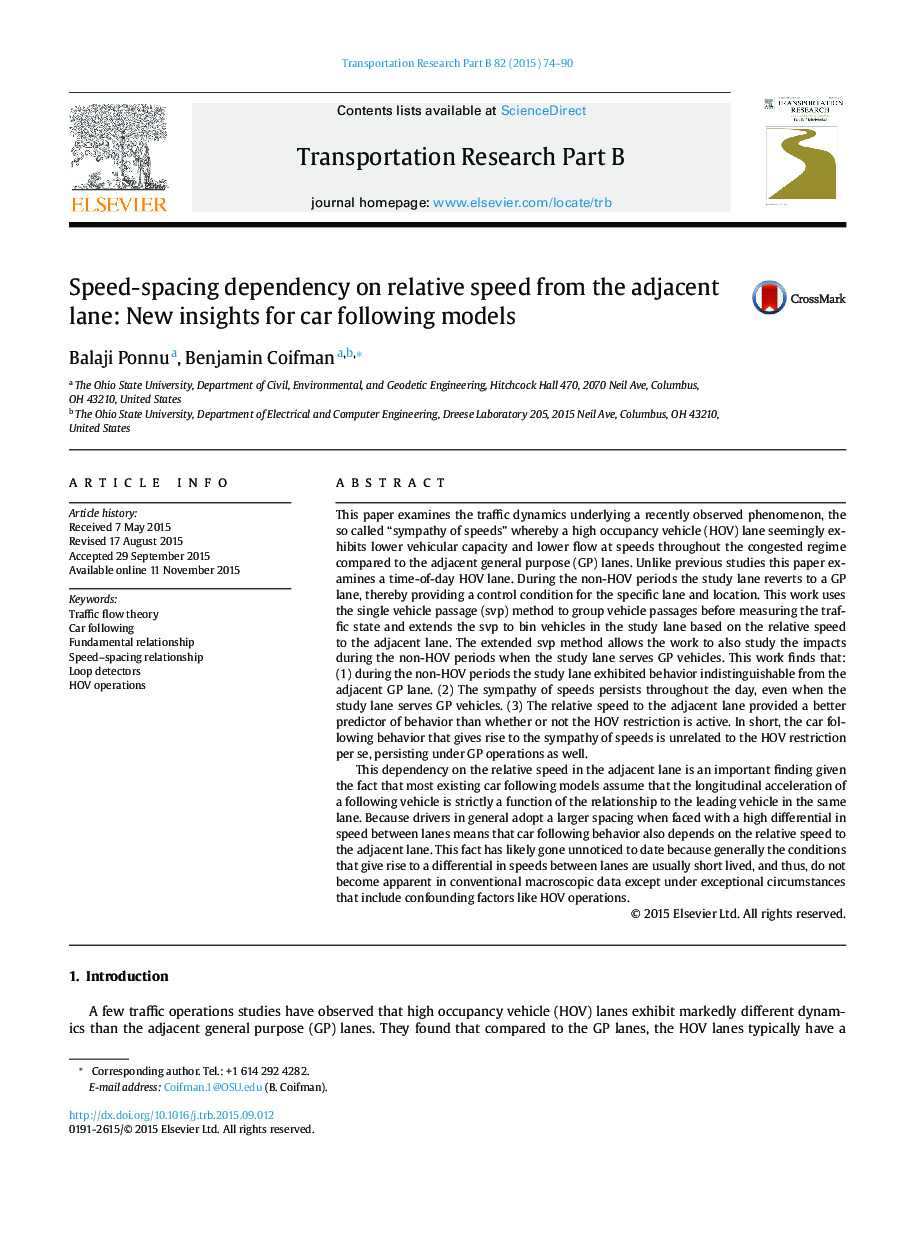| کد مقاله | کد نشریه | سال انتشار | مقاله انگلیسی | نسخه تمام متن |
|---|---|---|---|---|
| 1131660 | 1488962 | 2015 | 17 صفحه PDF | دانلود رایگان |
• HOV lanes exhibit lower flow at speeds throughout the congested regime.
• Results show that this difference is not due to HOV operations per se.
• The difference arises from relative speed between lanes, even for GP drivers.
• Drivers adopt larger spacing when faced with high relative speed between lanes.
• This dependence on adjacent lanes is absent from most car following models.
This paper examines the traffic dynamics underlying a recently observed phenomenon, the so called “sympathy of speeds” whereby a high occupancy vehicle (HOV) lane seemingly exhibits lower vehicular capacity and lower flow at speeds throughout the congested regime compared to the adjacent general purpose (GP) lanes. Unlike previous studies this paper examines a time-of-day HOV lane. During the non-HOV periods the study lane reverts to a GP lane, thereby providing a control condition for the specific lane and location. This work uses the single vehicle passage (svp) method to group vehicle passages before measuring the traffic state and extends the svp to bin vehicles in the study lane based on the relative speed to the adjacent lane. The extended svp method allows the work to also study the impacts during the non-HOV periods when the study lane serves GP vehicles. This work finds that: (1) during the non-HOV periods the study lane exhibited behavior indistinguishable from the adjacent GP lane. (2) The sympathy of speeds persists throughout the day, even when the study lane serves GP vehicles. (3) The relative speed to the adjacent lane provided a better predictor of behavior than whether or not the HOV restriction is active. In short, the car following behavior that gives rise to the sympathy of speeds is unrelated to the HOV restriction per se, persisting under GP operations as well.This dependency on the relative speed in the adjacent lane is an important finding given the fact that most existing car following models assume that the longitudinal acceleration of a following vehicle is strictly a function of the relationship to the leading vehicle in the same lane. Because drivers in general adopt a larger spacing when faced with a high differential in speed between lanes means that car following behavior also depends on the relative speed to the adjacent lane. This fact has likely gone unnoticed to date because generally the conditions that give rise to a differential in speeds between lanes are usually short lived, and thus, do not become apparent in conventional macroscopic data except under exceptional circumstances that include confounding factors like HOV operations.
Journal: Transportation Research Part B: Methodological - Volume 82, December 2015, Pages 74–90
